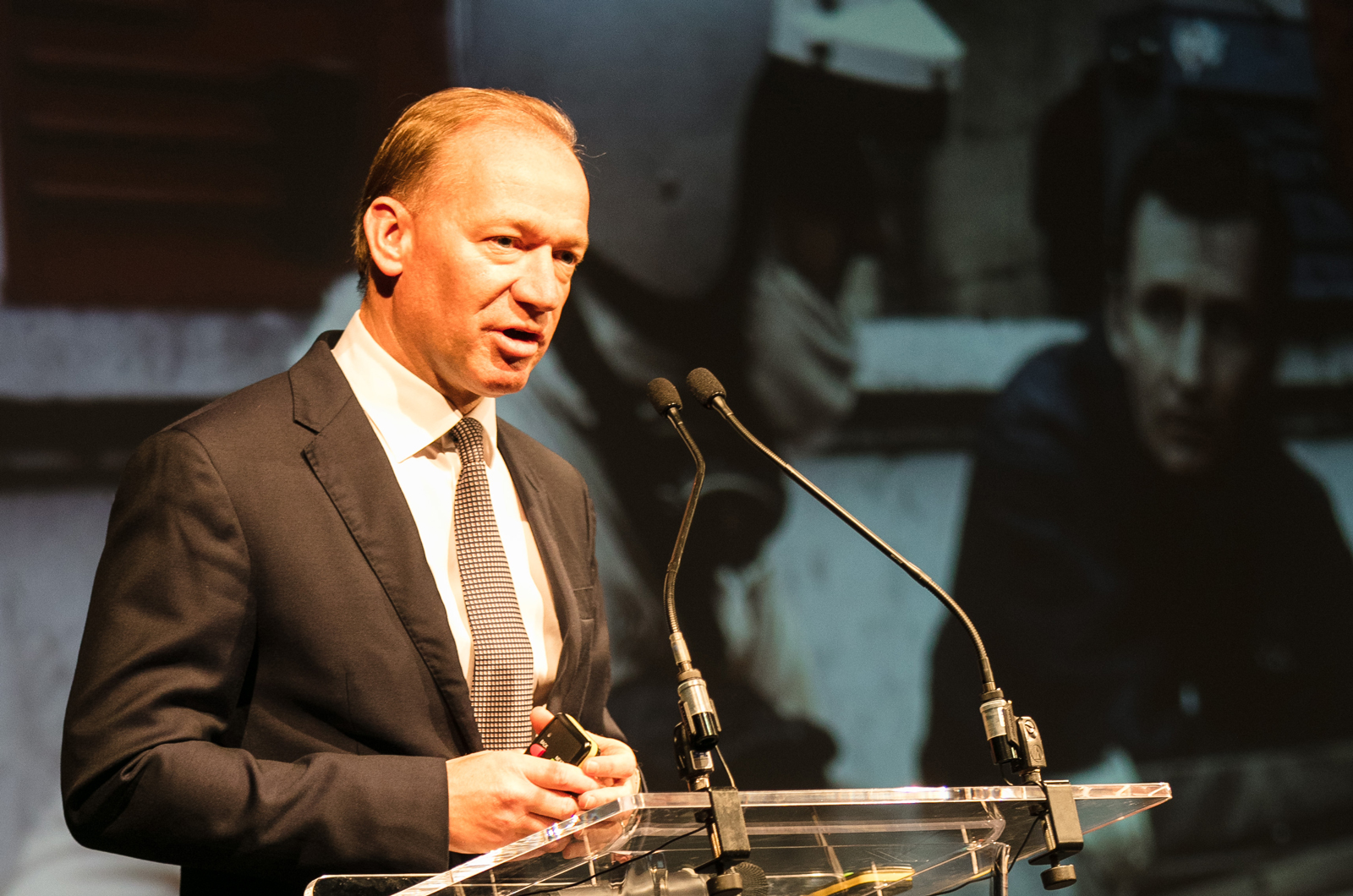McLaren CEO: Britain can lead a global car “weight race” to improve efficiency
Mike Flewitt said the Government should work more closely with car makers to maintain Britain's tech advantages, such as in carbonfibre manufacturing.
McLaren CEO Mike Flewitt believes the Government should work more closely with British car makers to direct a “weight race” that would help to reduce the mass of cars, thus improving their efficiency.
Flewitt (below) said at a recent Society of Motor Traders & Manufacturers industry summit that the UK’s expertise in "lightweighting" – illustrated by his company’s new Senna hypercar (above) – should be supported in order to help the country craft a global lead in a sector of growing importance.
“We now have a fantastic opportunity for the UK to be at the very forefront of a new automotive 'weight race' that can help achieve increasingly tough environmental targets,” Flewitt said. “It's clear to us that to be successful in lightweighting, industry and Government need to continue to work closely to ensure we all capitalise on the benefits for the sector, for the UK in general and also for vehicle owners who will increasingly demand more efficient products that deliver the driving attributes they expect.”
Flewitt said that McLaren is doing all it can to advance its weight reduction in cars, with a recent example being the soon-to-open McLaren Composites Technology Centre in Sheffield, which has received £50 million (Rs 452 crore) in investment.
“It [the Sheffield site] will lead to innovations in the technology going into our cars and not only provide a significant boost to that region, jobs and the supply chain, but also to the UK’s reputation for innovation,” he said.
 Flewitt continued to say that the ‘power race’ that high performance car makers have long been involved in should make way for this philosophy of enhanced efficiency. His comments were accompanied by mention of electric powertrains for future McLarens, illustrating the company’s commitment to improving the efficiency of its products.
Flewitt continued to say that the ‘power race’ that high performance car makers have long been involved in should make way for this philosophy of enhanced efficiency. His comments were accompanied by mention of electric powertrains for future McLarens, illustrating the company’s commitment to improving the efficiency of its products.
The UK’s expertise in carbon fibre production has been spurred on by the large number of Formula 1 teams based in the UK. These teams have been using carbon fibre to build the monocoques, suspension components and bodywork of their cars for decades, and it was McLaren’s racing outfit that introduced the use of the material to the sport, back in 1981.
Carbon fibre has trickled its way down from the most exotic cars to more mainstream vehicles in recent years; BMW, for example, uses a so-called carbon core in its 7 Series.
However, British supercar makers remain some of the most prevalent users of carbon fibre. The Aston Martin Valkyrie is due to use more advanced versions of carbon fibre than F1, due to the lack of budget restrictions and regulations.
Meanwhile, Mercedes-AMG looks set to choose the UK as the location for the production of its Project One hypercar because it builds its F1 cars in Northamptonshire.
Also read:
McLaren picks up keys to new carbon fibre manufacturing centre in Sheffield
McLaren Automotive rolls out its 15,000th car in just seven years
RELATED ARTICLES
Isuzu unveils D-Max EV at 2025 Commercial Vehicle Show
Revealed at the 2025 Commercial Vehicle Show in Birmingham, the Isuzu -Max EV is the first fully electric commercial pic...
Hyundai unveils next−gen highly efficient hybrid system
The next-gen hybrid system is claimed to offer 45% better fuel efficiency and 19% more power compared with ICE powertrai...
Horse Powertrain reveals hybrid conversion for electric cars
Engine-making joint venture of Geely and the Renault Group announces new hybrid powertrain that fits into the same space...






 27 Jun 2018
27 Jun 2018
 1987 Views
1987 Views





 Autocar Professional Bureau
Autocar Professional Bureau




